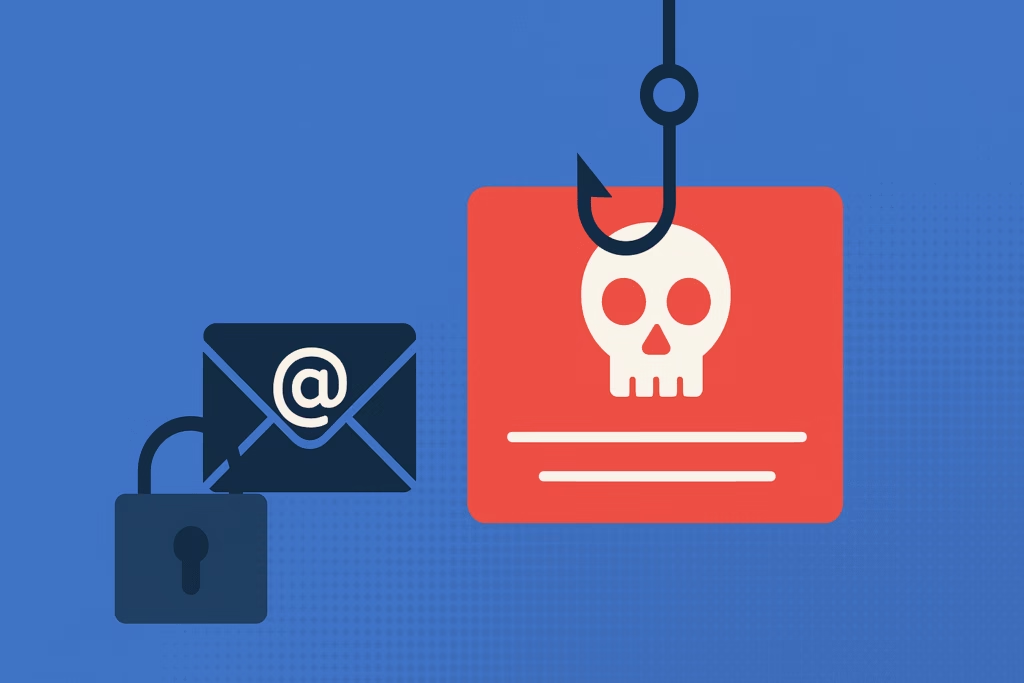
The cybercriminal landscape has evolved dramatically in recent years, with sophisticated phishing toolkits making it easier than ever for bad actors to launch convincing attacks. These ready-made phishing kits have democratized cybercrime, allowing even novice criminals to execute professional-grade attacks that can fool experienced users. Understanding how these tools work is crucial for organizations and individuals looking to protect themselves from increasingly sophisticated threats.
The proliferation of phishing toolkits represents one of the most significant challenges facing cybersecurity professionals today. According to the FBI’s Internet Crime Report, phishing attacks resulted in over $52 billion in losses in 2022 alone, with much of this damage facilitated by easily accessible criminal tools and resources.
What Are Phishing Toolkits and How Do They Work?
Phishing toolkits are comprehensive software packages that provide cybercriminals with everything needed to create and deploy phishing campaigns. These kits typically include pre-built templates, automated scripts, hosting solutions, and victim management systems that streamline the entire attack process.
Core Components of Modern Phishing Kits
Today’s phishing attack tools contain several key elements that make them particularly dangerous:
- Website Templates: High-quality replicas of legitimate sites including banks, social media platforms, and popular services
- Email Templates: Professional-looking messages designed to trigger urgent responses from victims
- Hosting Infrastructure: Bulletproof hosting services that resist takedown attempts
- Data Collection Systems: Automated tools for harvesting and organizing stolen credentials
- Evasion Techniques: Built-in methods to bypass security filters and detection systems
These comprehensive packages allow criminals to launch sophisticated campaigns with minimal technical knowledge, significantly lowering the barrier to entry for cybercrime.
The Underground Economy of Phishing Tools
The market for phishing toolkits operates through various underground channels, creating a thriving criminal economy that generates billions in illicit revenue annually.
Dark Web Marketplaces
Criminal marketplaces on the dark web serve as primary distribution points for phishing kits. These platforms operate similarly to legitimate software marketplaces, complete with user reviews, customer support, and regular updates. Popular toolkits can sell for anywhere from $50 to $5,000, depending on their sophistication and target specificity.
Phishing-as-a-Service (PhaaS) Models
The cybercriminal ecosystem has evolved to include subscription-based phishing services that mirror legitimate Software-as-a-Service (SaaS) models. These services provide:
- Monthly or annual subscriptions to phishing platforms
- Regular updates and new templates
- Technical support and tutorials
- Performance analytics and optimization tools
- Revenue-sharing models for affiliate criminals
This professionalization of cybercrime has made phishing attacks more consistent, scalable, and difficult to detect.
Common Types of Phishing Toolkits
Different phishing kits target various attack vectors and victim categories, each designed for specific criminal objectives.
Financial Services Kits
Banking and financial phishing toolkits remain among the most sophisticated and profitable. These kits often include:
- Real-time transaction interception capabilities
- Multi-factor authentication bypass mechanisms
- Geolocation-based targeting to match victim locations
- Integration with money laundering services
Credential Harvesting Toolkits
These kits focus on collecting login credentials for various online services. Popular targets include email providers, social media platforms, and cloud storage services. The stolen credentials are often sold in bulk on criminal marketplaces or used for secondary attacks.
Business Email Compromise (BEC) Tools
Specialized toolkits designed for targeting businesses often include advanced social engineering components and executive impersonation capabilities. These tools help criminals research targets and craft convincing messages that appear to come from trusted sources within an organization.
How Criminals Acquire and Deploy Phishing Resources
Understanding the criminal acquisition and deployment process helps security professionals better anticipate and counter these threats.
Initial Access and Purchase
Criminals typically acquire phishing toolkits through several channels:
- Direct Purchase: Buying complete kits from established criminal vendors
- Rental Services: Short-term access to phishing infrastructure for specific campaigns
- Criminal Partnerships: Revenue-sharing agreements with toolkit developers
- Theft and Piracy: Stolen or leaked tools distributed through criminal networks
Deployment and Customization
Once acquired, criminals customize these tools for their specific targets. Modern phishing kits often include user-friendly interfaces that allow criminals to:
- Upload custom logos and branding elements
- Modify text and messaging for specific geographic regions
- Configure automated email distribution systems
- Set up victim tracking and analytics
Technical Evasion Methods in Modern Toolkits
Contemporary phishing attack tools incorporate sophisticated evasion techniques designed to bypass security measures and extend campaign lifespans.
Anti-Detection Technologies
Advanced phishing kits employ multiple layers of protection:
- IP Filtering: Blocking access from known security company IP ranges
- User-Agent Detection: Identifying and redirecting automated security scanners
- Geographic Restrictions: Limiting access to specific countries or regions
- Time-Based Activation: Activating malicious content only during certain hours
Content Obfuscation Techniques
Modern toolkits use various methods to hide malicious content from automated detection systems:
- Dynamic content generation using JavaScript
- Base64 encoding and other obfuscation methods
- Image-based text to avoid keyword detection
- Legitimate service abuse (using trusted platforms for hosting)
Impact on Organizations and Individuals
The widespread availability of phishing toolkits has significantly amplified the threat landscape, creating challenges for both organizations and individual users.
Financial Consequences
According to IBM’s Cost of a Data Breach Report 2023, the average cost of a phishing-related data breach reached $4.76 million in 2023. This figure includes direct financial losses, recovery costs, regulatory fines, and reputational damage.
Operational Disruption
Beyond immediate financial losses, successful phishing attacks often result in:
- Extended system downtime during incident response
- Loss of customer trust and business relationships
- Regulatory compliance violations and associated penalties
- Increased insurance premiums and security investment requirements
Detection and Prevention Strategies
Combating toolkit-based phishing attacks requires a multi-layered approach that addresses both technical and human vulnerabilities.
Technical Countermeasures
Organizations should implement comprehensive technical defenses:
- Advanced Email Filtering: Deploy solutions that analyze email content, sender reputation, and behavioral patterns
- DNS Filtering: Block access to known malicious domains and newly registered suspicious sites
- Web Application Firewalls: Implement WAF solutions to detect and block phishing attempts
- Threat Intelligence: Subscribe to feeds that provide real-time information about new phishing kits and campaigns
Employee Training and Awareness
Human-centered defenses remain critical for preventing successful phishing attacks:
- Regular security awareness training focusing on current phishing techniques
- Simulated phishing exercises to test and improve employee responses
- Clear reporting procedures for suspicious emails and websites
- Recognition programs that reward good security behaviors
The Role of Law Enforcement and Industry Cooperation
Combating the phishing toolkit ecosystem requires coordinated efforts between law enforcement agencies, cybersecurity companies, and technology platforms.
Takedown Operations
International law enforcement agencies regularly conduct operations targeting phishing infrastructure. However, the distributed nature of these operations and jurisdictional challenges make complete elimination difficult.
Public-Private Partnerships
Industry initiatives such as the Anti-Phishing Working Group facilitate information sharing between organizations and help coordinate response efforts against large-scale phishing campaigns.
Future Trends in Phishing Tool Evolution
The phishing toolkit landscape continues to evolve, with several emerging trends that will shape future threats:
Artificial Intelligence Integration
Criminal organizations are beginning to incorporate AI technologies into their toolkits, enabling:
- Automated target research and social engineering
- Dynamic content generation based on victim profiles
- Improved evasion techniques that adapt to security measures
- Enhanced voice and video deepfake capabilities for advanced attacks
Mobile-First Attack Vectors
As mobile device usage continues to grow, phishing kits are increasingly optimized for mobile platforms, incorporating SMS-based attacks, malicious mobile apps, and mobile-optimized phishing pages.
Building Comprehensive Defense Strategies
Organizations need robust, multi-layered defense strategies to combat the growing sophistication of phishing toolkits effectively.
Implementing Zero Trust Architecture
Zero trust security models assume that threats may already exist within network perimeters, implementing continuous verification and monitoring systems that can detect and respond to phishing-based compromises more effectively.
Advanced Threat Protection Solutions
Modern anti-phishing solutions like PhishDef provide real-time protection against toolkit-based attacks by analyzing multiple risk factors simultaneously, including sender reputation, content analysis, and behavioral patterns. These solutions can identify and block phishing attempts even when they use previously unknown toolkits or techniques.
Key Takeaways
The proliferation of phishing toolkits represents a fundamental shift in the cybercrime landscape, making sophisticated attacks accessible to criminals with limited technical skills. Organizations and individuals must understand that traditional security measures alone are insufficient against these evolving threats.
Effective protection requires a combination of advanced technological solutions, comprehensive employee training, and proactive threat intelligence. The criminal ecosystem supporting phishing toolkits will continue to evolve, making ongoing vigilance and adaptive security strategies essential.
Success in combating phishing attacks depends on staying informed about emerging threats, implementing layered security controls, and fostering a security-conscious culture that empowers users to identify and report suspicious activities.
Don’t let sophisticated phishing toolkits compromise your organization’s security. PhishDef’s advanced anti-phishing platform provides real-time protection against the latest threats, including toolkit-based attacks that traditional security solutions might miss. Contact PhishDef today to learn how our comprehensive phishing protection can safeguard your business from evolving cybercriminal resources and techniques.


